Everything you need to know about SpaceX’s historic launch of NASA astronauts
A successful mission means the US can launch astronauts from home again, and match Russia’s and China’s capabilities.
Update: Launch was successful on May 30 followed by successful docking and entry of astronauts into the International Space Station on May 31! 🚀️👨🚀
SpaceX is set to launch two NASA astronauts onboard its Falcon 9 rocket in just a few hours, currently scheduled at 8.33 PM UTC on May 27. After NASA retired the Space Shuttle in 2011, this is the first time the US will be launching astronauts from its own soil. The astronauts will arrive at the International Space Station (ISS) a day later on SpaceX’s crew capsule, called Crew Dragon / Dragon 2, which will fly on top of the rocket.
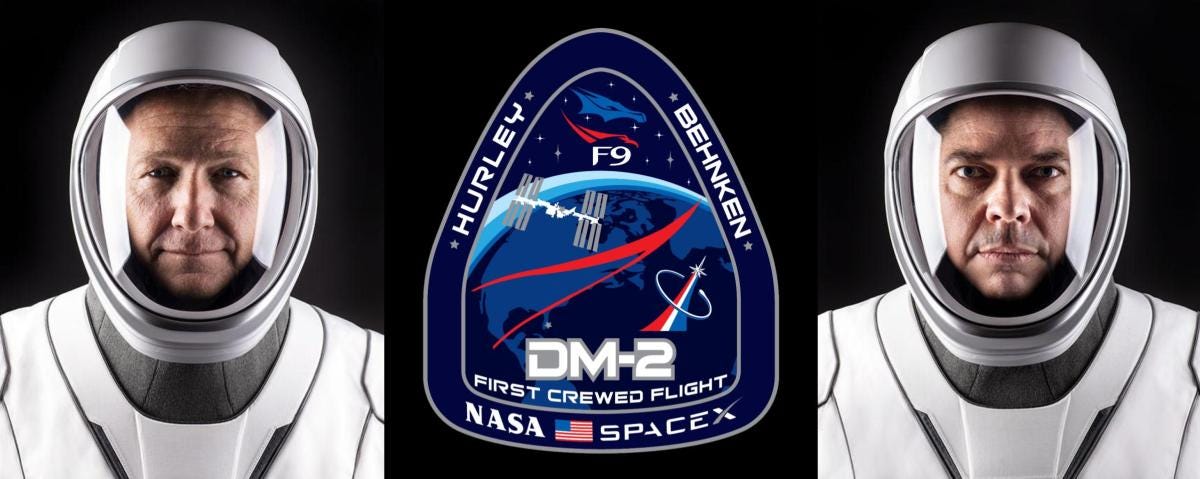
NASA’s Commercial Crew Program
NASA had originally planned for its Ares I rocket, part of the wider Constellation program to return to the Moon, to take the shuttle’s place. But in a radical move, the Barack Obama administration cancelled the program in 2010 and instead tasked NASA with helping companies develop human spaceflight capability commercially. The idea behind the Commercial Crew Program is that in addition to opening up the low-Earth orbit and the ISS to private players, it would free NASA to build spacecraft and rockets for deep-space missions to the Moon and beyond.

Historically, NASA has designed and owned human spaceflight technologies by itself, only hiring contractors to build the systems. But with Commercial Crew, so long as the companies meet the agency’s mission and safety requirements, they are free to design the system any way they’d like, and NASA would fund them.
After evaluating proposals from several companies, NASA chose SpaceX and Boeing in 2014 to develop human-rated capsules to ferry astronauts to and from the ISS, to be launched on existing rockets. SpaceX has been awarded a cumulative $3.1 billion (Rs 23,466 crore) to develop its proposed Crew Dragon while Boeing won $4.8 billion (Rs 36,334 crore) for its Starliner. These companies also get to tap into NASA expertise and facilities as and when they need.
The important thing about the Commercial Crew Program is that the companies own and operate their own hardware and infrastructure so much so that the astronauts even train there, instead of at NASA, as has been the tradition. SpaceX and Boeing can even use the technology to carry private astronauts to space if they wish, regardless of NASA missions.
But for almost a decade in the meantime, the US has had no ability to transport astronauts to and from space. To continue their investment in the ISS, NASA has been buying increasingly expensive seats for US astronauts on Russia’s Soyuz rockets. And to send supplies, NASA has been running the similarly commercial COTS program. As part of this agreement, SpaceX has been flying its cargo-only Dragon 1 spacecraft to the ISS for over seven years, so human spaceflight will only be an added business for the company.
How do they fare against the Space Shuttle?
While the Space Shuttle typically carried five to seven astronauts, Crew Dragon and Starliner will each carry a maximum of four, despite having a capacity for seven. The shuttle used to cost $214 million per seat (Rs 1,619.88 crore) whereas NASA pays $55 million per seat to SpaceX (Rs 416.32 crore) and $90-99 million per seat to Boeing (Rs 681.25-749.38 crore). The smaller Russian Soyuz rocket, with a maximum capacity of three astronauts per launch, currently costs about $90 million per seat. This isn’t a fair comparison as the shuttle also had extra space for cargo and a robotic arm. The shuttle could fit a Crew Dragon, Starliner and Soyuz along its length!
But like the Space Shuttle, Crew Dragon and Starliner are partially reusable. Each human spaceflight by SpaceX will be on a brand new Crew Dragon, which will be refurbished for future cargo flights. Boeing on the other hand plans to reuse Starliner even for human flights.
SpaceX milestones
SpaceX’s upcoming mission to safely ferry astronauts to and from the ISS, dubbed Demo-2, represents the final demonstration in a series of milestones to get NASA’s okay for human spaceflight.
SpaceX launched the Demo-1 mission last year – an uncrewed Dragon capsule that autonomously docked to the ISS and subsequently returned safely to Earth. Boeing hit a snag last year when its similar uncrewed Starliner mission failed. Boeing will have to repeat the mission with success before it can perform a crewed test.
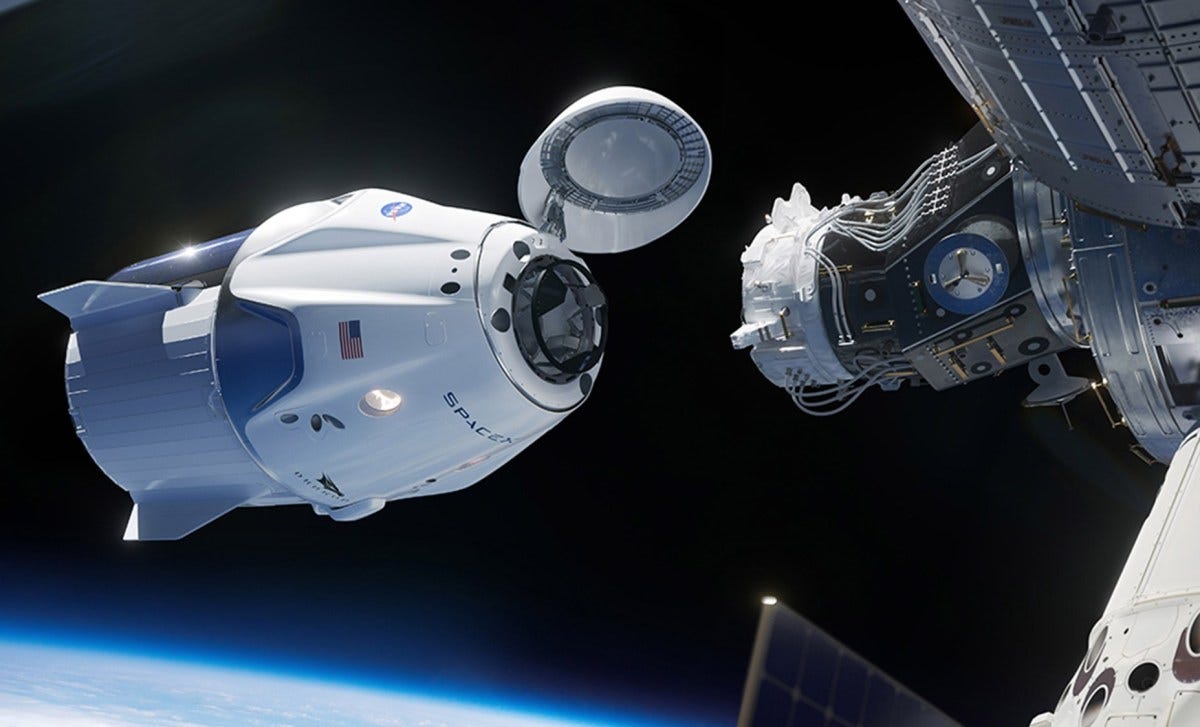
The Demo-2 mission had originally been planned for launch last year. But on April 20, 2019, the capsule from Demo-1 was destroyed during a static fire test, ahead of its planned use for an in-flight abort test. SpaceX traced the cause to a faulty valve and fixed the issue.
In January 2020, SpaceX successfully demonstrated the Crew Dragon’s autonomous ability to detect a rocket failure, jettison itself mid-flight and gently splash down. For emergencies on the launchpad, before liftoff, such as a fire, SpaceX also successfully demonstrated rescue operations for astronauts last month.
SpaceX has also undertaken 27 parachute tests to make sure the mechanism the capsule will use to land back on Earth from space or after an in-flight abort is extremely reliable. Crew Dragon’s ability to return astronauts safely to Earth will be available throughout the mission.
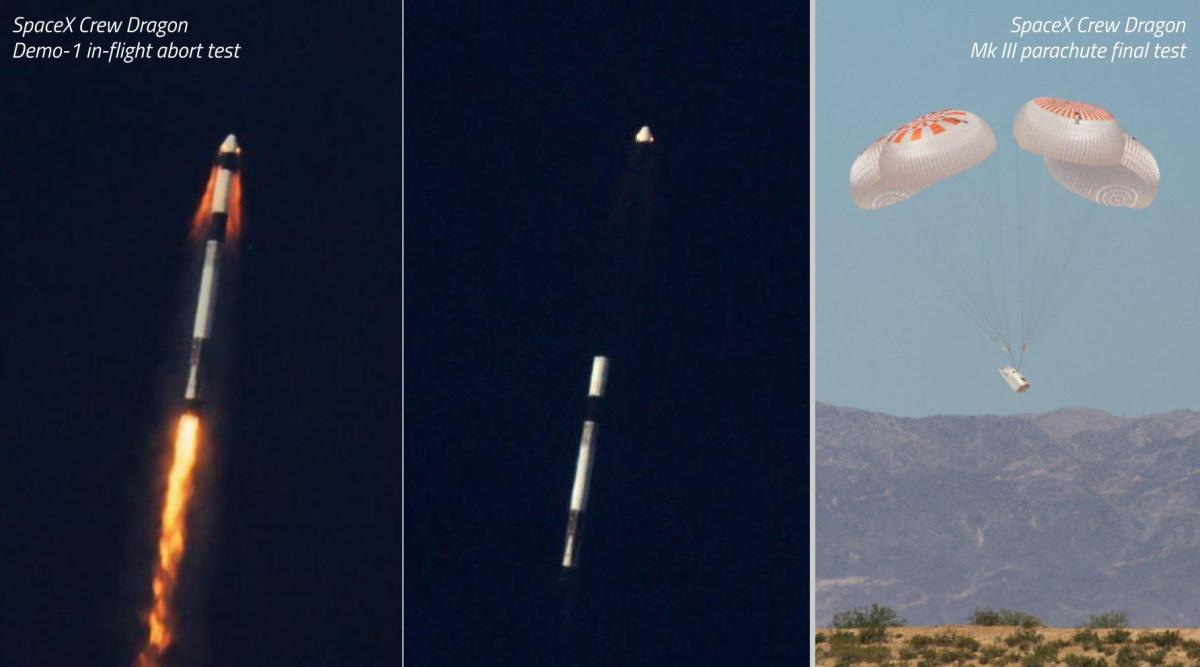
Launch preparations
The preparations for SpaceX’s Demo-2 mission have been going strong despite the coronavirus pandemic. The astronauts, Robert Behnken and Douglas Hurley, have been practising various mission phases with simulation runs along with the SpaceX mission operations team. On the mission, Behnken and Hurley will be wearing customized pressurized spacesuits designed in-house by SpaceX.
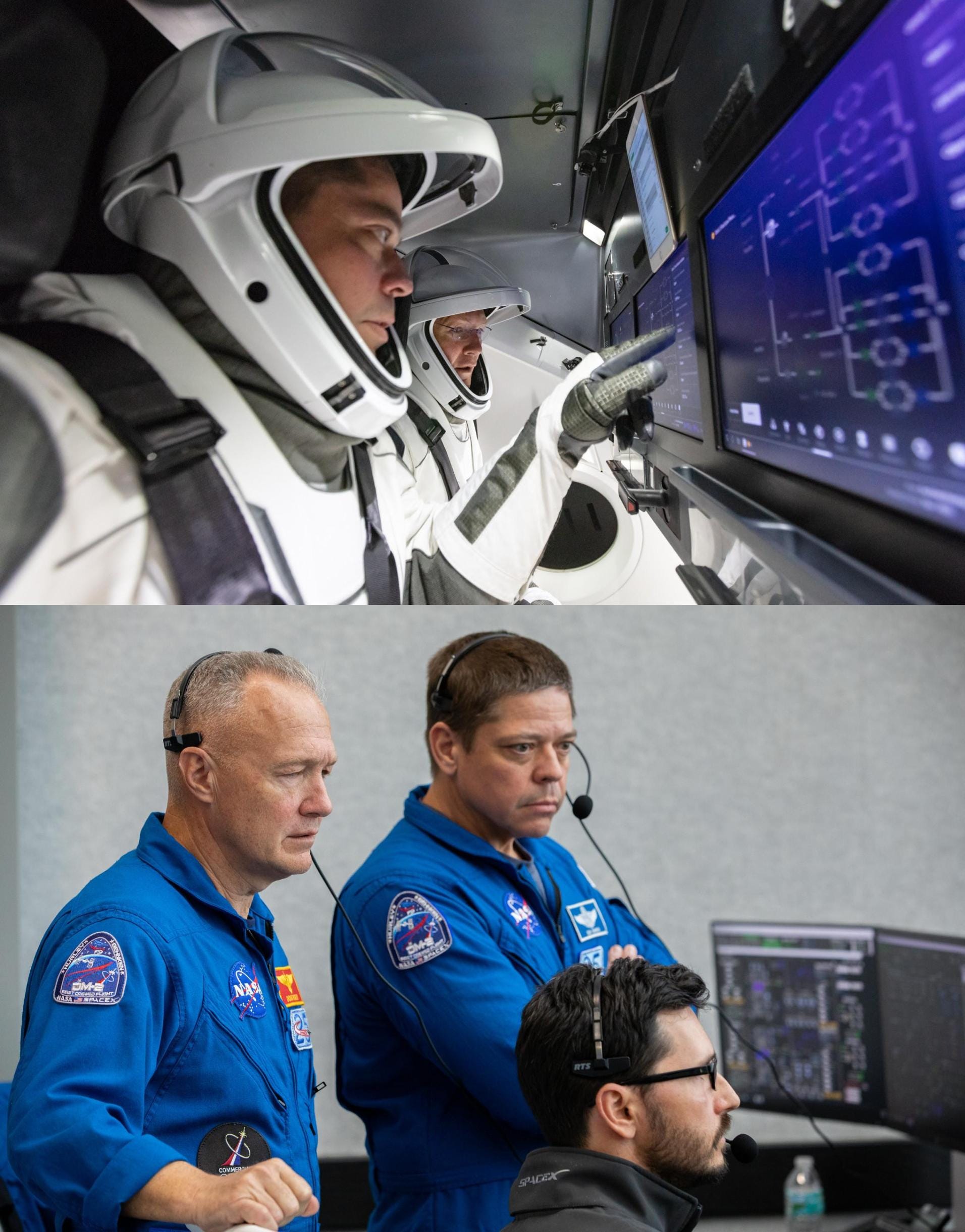
The Crew Dragon has a touchscreen interface, a first on any human-rated spacecraft. The astronauts, who have previously been on two Space Shuttle flights each, have said the touchscreen has taken some adjusting but works just fine. But since Crew Dragon is designed to be autonomous throughout the flight, including during the nail-biting ISS docking phase, the astronauts will hardly need to take manual control.
Both NASA and SpaceX are advertising the historic importance of the launch in different ways. Astronaut Hurley piloted the last Space Shuttle mission and is now commander of the Crew Dragon. The Falcon 9 launching the capsule will take off from Launch Complex 39A, the same launchpad used to send humans to the Moon. NASA even revived their much loved ‘worm logo’ and had it painted on the Falcon 9.
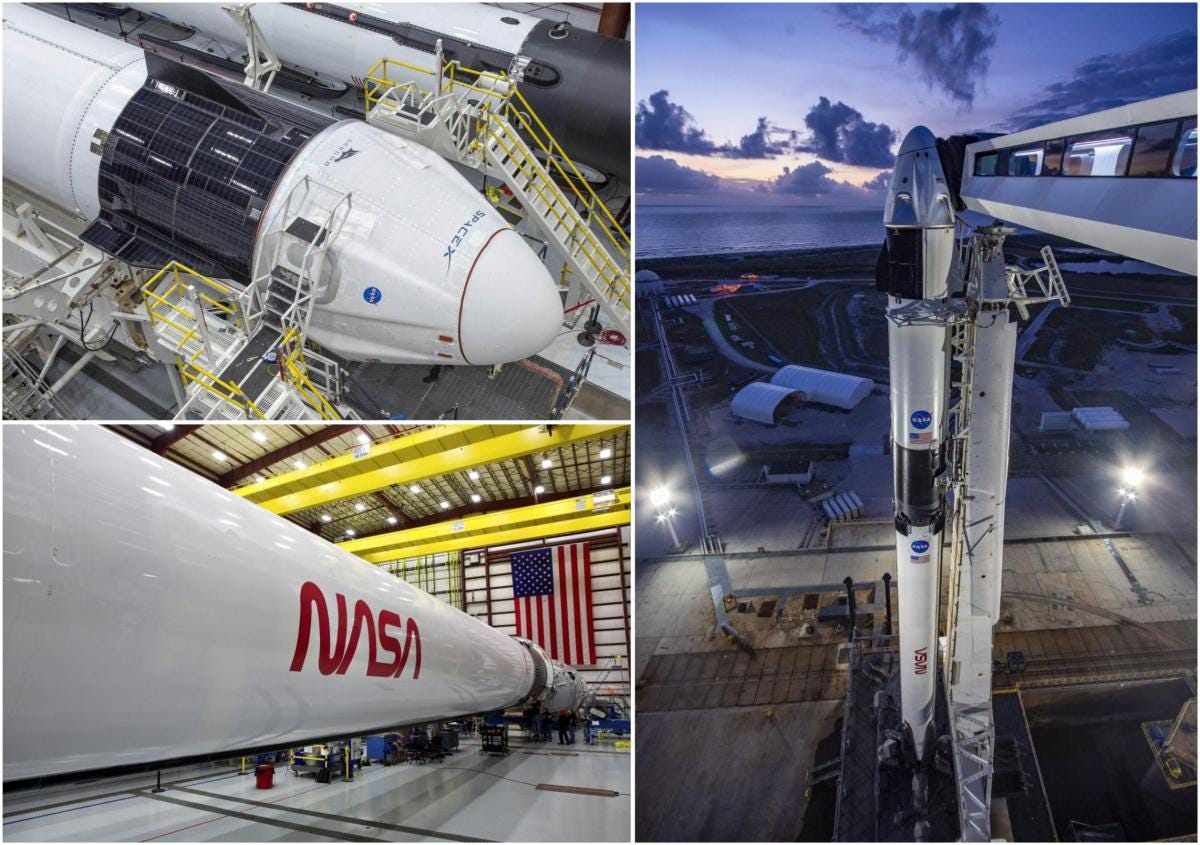
After boosting the astronauts towards the ISS, we’ll also get to see the Falcon 9’s first stage attempt yet another drone ship landing, for an added dash of wholesomeness.
NASA administrator Jim Bridenstine has urged space enthusiasts not to travel to view the launch, requesting them to watch it online instead. This will be the first crewed US spaceflight mission to not include public presence, except select members of the press.
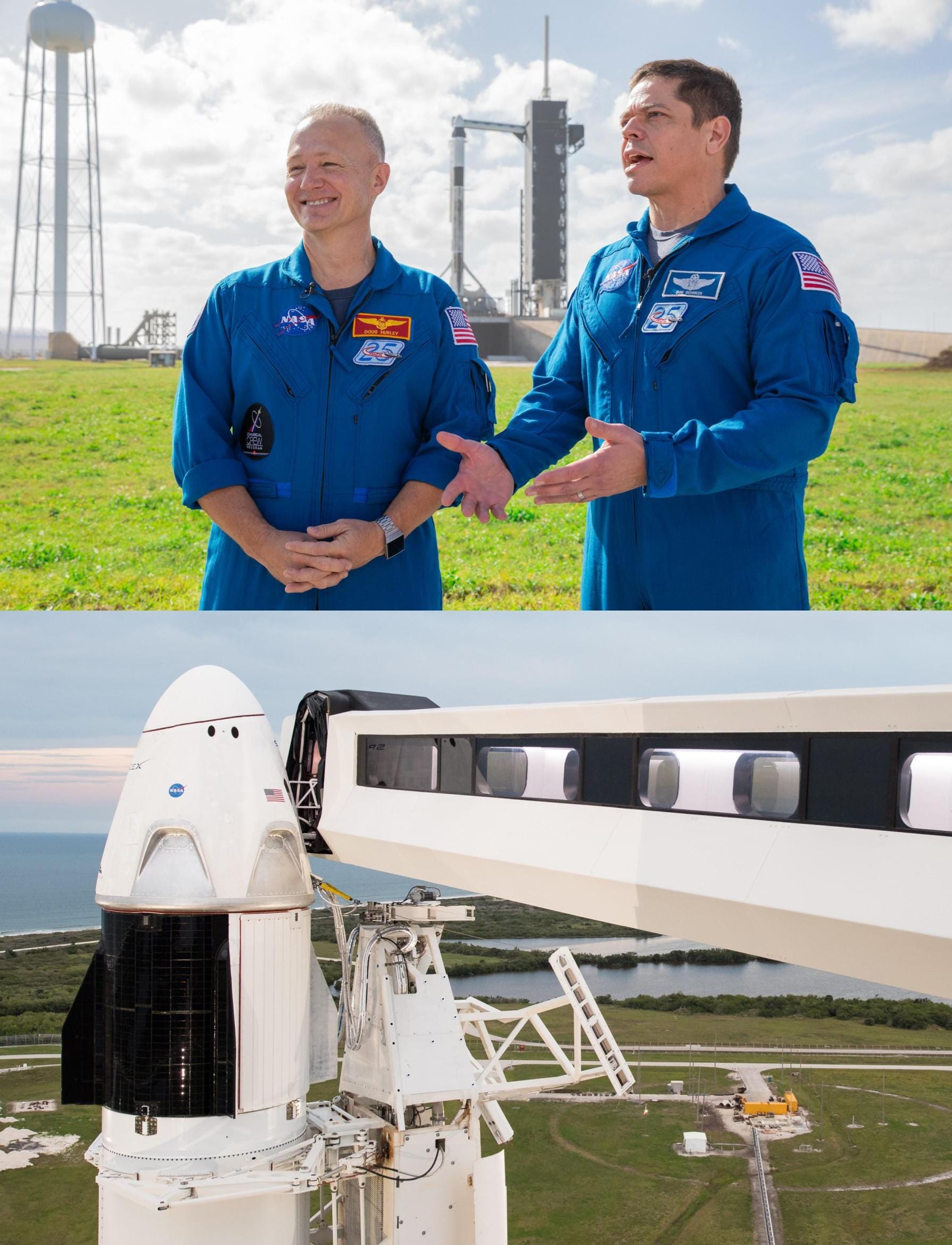
That hasn’t stopped SpaceX and NASA from marketing the launch in digitally enticing ways. For example, SpaceX launched an online game that gives you the same controls as in Crew Dragon, which NASA astronauts will use; your task is to manually dock with the ISS. NASA even challenged Kerbal Space Program players across the world to recreate the Demo-2 mission and share their game footage. (Kerbal Space Program is a popular game based in which players build and launch spacecraft to perform custom missions, making many of the same calculations and decisions that an engineer at ISRO might.)
What’s next?
If the launch is successful and if Crew Dragon docks with the ISS, the astronauts will join the three already at the station to conduct experiments for two to three months, (although their mission could be extended for up to seven months). After this, they will return to Earth in Crew Dragon and splash down in the Atlantic Ocean. The capsule will also drop its trunk containing trash collected from the ISS en route into the atmosphere to burn up.
If SpaceX’s Demo-2 mission is successful, the company can begin executing contracts to carry astronauts on six more ISS flights, the second in 2020 itself. If the mission is unsuccessful, the next steps will depend on the nature and extent of failure.
India’s Gaganyaan program aims to develop the same human spaceflight capability, albeit by the state-funded ISRO, by the end of 2021. Perhaps more notably, the US’s return to human spaceflight comes around the same time China successfully tested and launched its next-generation human space capsule. Chinese astronauts will use this capsule to dock with their upcoming space station – a large, modular spacecraft – and eventually for flights around the Moon. Meanwhile, the US awaits its controversial super-heavy-lift Space Launch System rocket to be ready next year to test its deep-space human spaceflight abilities.
For NASA, opening up human spaceflight in Earth orbit to commercial entities is only the first step. It has doubled down on extending such public-private partnerships by funding commercial companies to send both cargo and humans to the Moon’s surface as part of its Artemis program, in the coming decade.
In all, human spaceflight is progressing at a rapid pace across the globe. This decade is full of milestones to look forward to, starting with the first ever launch of astronauts by a private space company.
Originally published at The Wire.
Like what you read? I don’t display ads, support me to keep me going. 🚀
